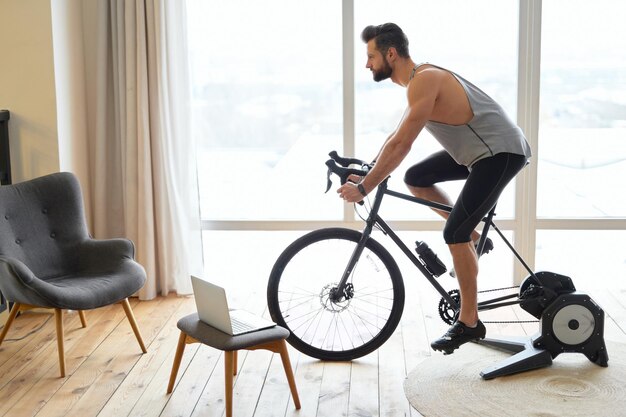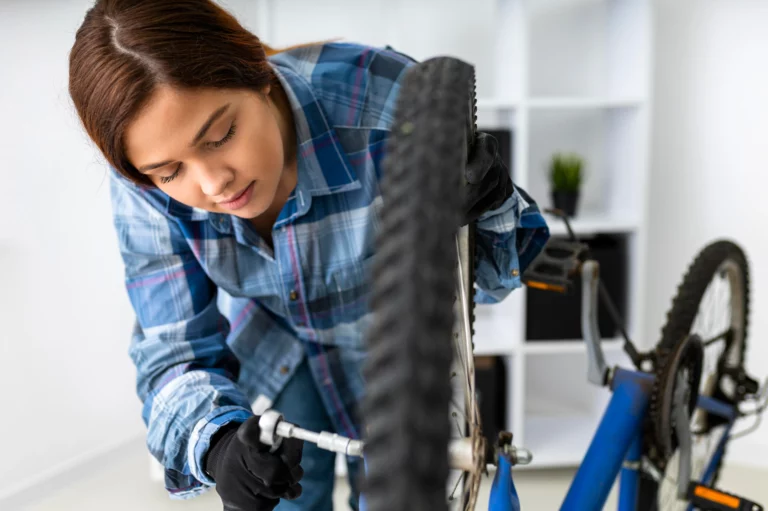The Best Leg Exercises for Cyclists
Leg power is crucial for success on the bike, as any rider will attest to. But which exercises are the most effective for strengthening your legs and enhancing your performance? This article has you covered. We have rounded up the top leg exercises for cyclists and provided all the necessary details on proper form and technique. We’ll demonstrate how to advance your leg training to enhance your cycling performance, using exercises. So, let us dive in and discover the best leg exercises for cyclists!

The Benefits of Leg-Strengthening Workouts for Cyclists
As a cyclist, you know that leg strength and endurance are essential for powering through your rides. But did you know incorporating leg-strengthening workouts into your training routine can also improve your overall cycling performance? Having stronger legs makes it simpler to bike at greater speeds and climb hills because you can produce more power with each pedal stroke.
But that’s not all – leg workouts focusing on endurance will also help you go further distances with less fatigue. Your muscle strength is the key factor which decides the sustainability of your energy and stamina throughout the ride.
Cycling performance may drastically improve if you include leg exercises to your regimen of training. Being cyclist, if you incorporate leg-strengthening workouts into your training routine, you can take your skills to the next level even if you are proficient cyclist.
1. Squats:
Squats are one of the most popular and effective leg exercises for cyclists. They focus on the muscles most used during cycling. Adding squats in your workout routine is unquestionably a great idea to if you plan to build your muscular strength. It will also increase your power output and cycling performance.
To perform a proper squat:
- Stand with your feet shoulder-width apart, with your toes pointing slightly outward.
- Keeping your back straight, lower your body as if you were sitting back in a chair. Your thighs should be parallel to the surface and your knees should not exceed your ankles.
- Take help of your heels in return back to the starting position.
To avoid injury, it is essential to maintain proper form when performing squats. Keep your upper body up and your back straight throughout the squat. Moreover, ensure that your knees don’t go past your toes when lowering your body.
There are various squat variations that can benefit cyclists, including the front squat, goblet squat, and Bulgarian split squat. The front squat places more emphasis on the quads, making it a great exercise for cyclists looking to build up their leg strength. The goblet squat is a more beginner-friendly variation that still targets the quads, hamstrings, and glutes. Finally, the Bulgarian split squat is a single-leg exercise that can help improve balance and stability.
2. Deadlift
The deadlift, one of the exercises that targets every muscle in the lower body, is the second most crucial exercise. The Romanian deadlift, a variation of the traditional deadlift, targets the glutes and hamstrings even more intensely.

Another variation that can intensify the workout is the single-leg deadlift. However, they require a good deal of balance and stability, so they should only be attempted by cyclists who have sufficient strength and control. Proper form is critical for deadlifts, especially single-leg deadlifts, to avoid injury.
To perform a deadlift:
- Stand with your feet hip-width apart and grip the barbell with an overhand grip.
- Keep your chest up and back straight, and hinge at the hips to lower the barbell to the floor while keeping your knees slightly bent.
- Drive through your heels to lift the barbell back up to the starting position.
Deadlifts and its variants can assist increase balance and stability, lower body strength and power, and cycling performance if you include them in your training regimen.
3. Lunges:
Lunges are a fantastic lower body exercise. Without a doubt, lunges are an excellent addition to any cyclist’s training regimen. Adding a reverse lunge to your workout can further target your hamstrings and glutes. It’s crucial to perform lunges on both legs to avoid creating muscle imbalances that can lead to injuries. Lunges may be included into your routine by performing a set with your right leg first, then switching to your left.

For cyclists with good balance, a walking lunge is another excellent option. This variation requires you to step forward and perform a lunge while walking forward, alternating legs as you go. This adds an extra challenge to your balance and stability, which can benefit your cycling performance.
Maintaining proper form when performing lunges essential to avoid knee pain and other injuries. Keep your front knee aligned with your ankle, and avoid letting it extend past your toes. Start with a modest weight or none at all, as you would with any workout, then raise your weight gradually as you gain strength. This will strengthen your lower body muscles and improve cycling performance.
4. Leg Press
The leg press is an excellent exercise for cyclists to strengthen their lower body muscles. It primarily targets the quadriceps, glutes, and hamstrings, crucial muscles for cycling performance. For people with mobility issues, leg press is an excellent option.

Proper technique and form are crucial when performing the leg press. Place your feet on the platform shoulder-width apart and lean back into the backrest firmly. Maintaining a straight back and toes in line with your knees while you use your heels to push the weight away from you. Avoid locking your knees at the top of the movement and lowering the weight too far to avoid straining your knees. There are various leg press variations that can benefit cyclists, such as the single-leg press and the sled push. The single-leg press is an excellent way to target each leg individually and correct any muscle imbalances. The sled push involves pushing a weighted sled forward, which strengthens the lower body muscles and improves your overall conditioning and endurance.
Also read: Does Cycling Help In Weight Loss?







